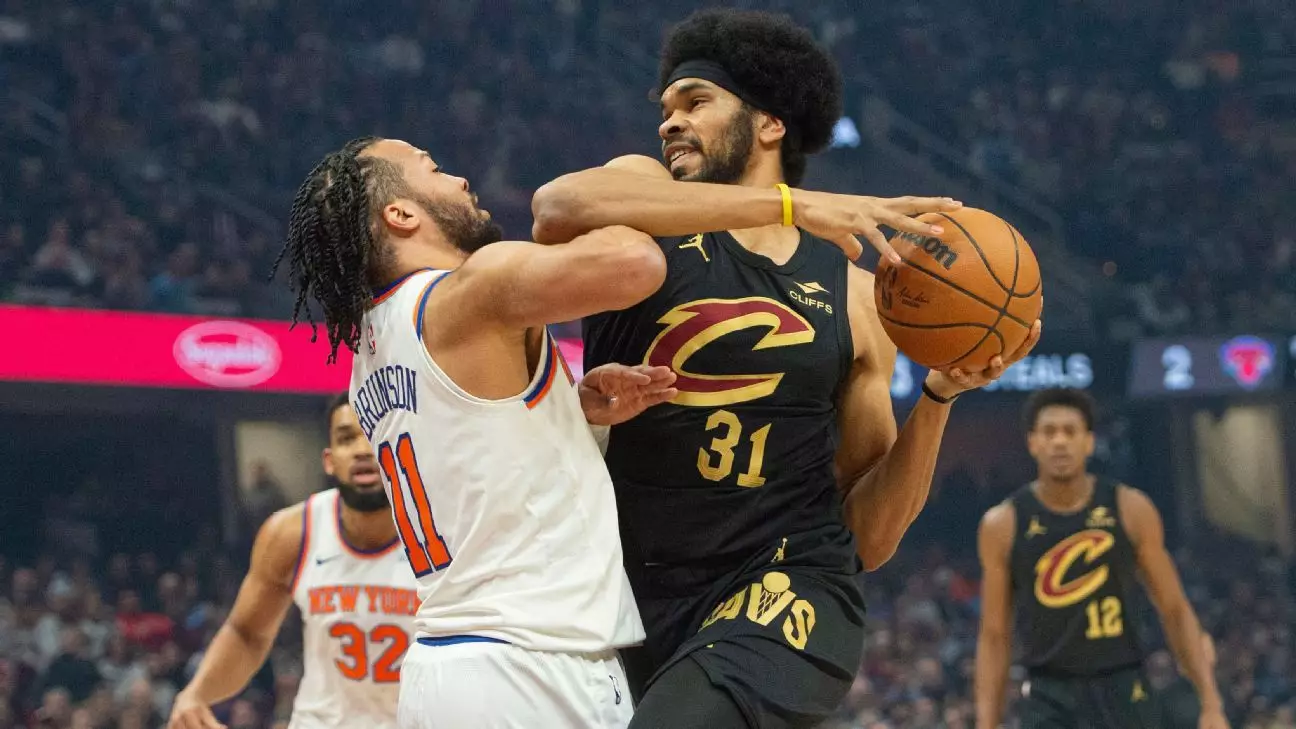The Cleveland Cavaliers delivered an impressive performance against the New York Knicks, clinching a dominant 142-105 victory that further solidified their position as the top team in the NBA. However, this triumph was marred by the unsettling injury of center Jarrett Allen, whose right hand was hurt during the game. His condition raises significant questions about the Cavaliers’ lineup cohesion as they prepare for their next contest against the Memphis Grizzlies.
While the Cavaliers celebrated their most decisive win against the Knicks in franchise history, the spotlight soon shifted to Allen’s injury. Initially, the team reported that X-rays on Allen’s hand had come back negative, allowing for a glimmer of hope. Coach Kenny Atkinson expressed cautious optimism, noting that an MRI was scheduled for the following day. Allen had made the call to exit the game, indicating to Atkinson that he could no longer continue due to the discomfort in his hand. The center’s reluctance to delve into the specifics of his injury after the game drew attention and highlighted possible hidden stress regarding his ability to contribute moving forward.
The affable nature of Allen contrasted sharply with the seriousness of potential repercussions for the Cavaliers’ game plan. With Allen sidelined intermittently in the second half, and as he recounted that his injury may have occurred while attempting to block a shot in the first quarter, concern began to loom over the Cavaliers. For a team gearing up for a deep playoff run, losing a pivotal player like Allen—even temporarily—can significantly alter their competitive edge.
In the backdrop of Allen’s injury, the Cavaliers are encountering other roster fluctuations. The return of Dean Wade, who has been recovering from a knee bruise, and Isaac Okoro’s comeback after a shoulder strain, adds layers to Cleveland’s dynamics. Together, they signify an effort to stabilize the team amid injury uncertainties. The chemistry within the roster has been further tested with the recent scares that have befallen All-Star guard Darius Garland.
Garland faced a concerning moment when he collided with the floor, an incident that rekindled memories of his last season’s broken jaw. Watching him fall hard yet somehow return to the game showcased the grit Cleveland’s players possess, but it also serves as a reminder of the fragility of their campaign. Would the Cavaliers be able to maintain their formidable standing if their key players consistently faced health limitations?
The implications of Allen’s injury reach far beyond his individual performance. He is a vital component of the Cavaliers’ inside presence, influencing both defense and offense. The prospect of missing him against tough opposition like the Memphis Grizzlies call into question how Cleveland will adapt their approach. As the season progresses, the dynamics of NBA squads are in constant flux due to injuries. Resilience often defines the most effective teams.
Should Allen need an extended period for recovery, younger players and bench warmers may need to step up, offering them valuable playing time but also increasing pressure on their performances. The Cavaliers have experienced a relatively injury-free season compared to other teams, so addressing this juncture with tactical foresight is critical for their ambitions.
In the high-stakes world of the NBA, a single injury can drastically shift a team’s trajectory. As the Cavaliers celebrate their impressive victory, the looming uncertainty surrounding Jarrett Allen’s hand and its potential fallout illustrates the precarious balance teams must maintain between performing at their best and managing player health. The upcoming MRI test will provide clarity, but regardless of the outcomes, the Cavaliers will need to navigate these challenges thoughtfully as they pursue a championship-worthy season. The ability to adapt amidst adversity could well define their path ahead.

